Exploring the houses of Colebrook Terrace
This article contains affiliate links. We may earn a small commission on items purchased through this article, but that does not affect our editorial judgement.
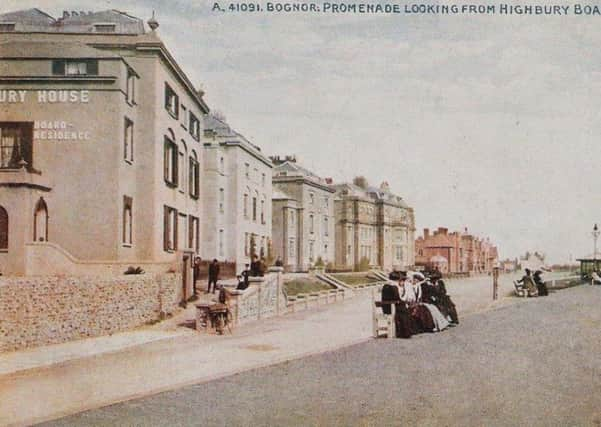

Therefore we shall look at the area between York Road and Clarence Road, which once consisted of open meadows. This area today is the site of The Regis car park.
This area sported a terrace befitting any seaside resort, that of Colebrook Terrace.
Advertisement
Hide AdAdvertisement
Hide AdConstruction commenced on September 24, 1824 at a time when there was much development being achieved throughout the town. Lady Colebrook, whose family had represented Arundel in Parliament, laid the foundation stone. A press report of the time remarked: “It is anticipated by the ensuing year many first-rate residences will be completed for the reception of the distinguished visitors to this delightful watering place.”
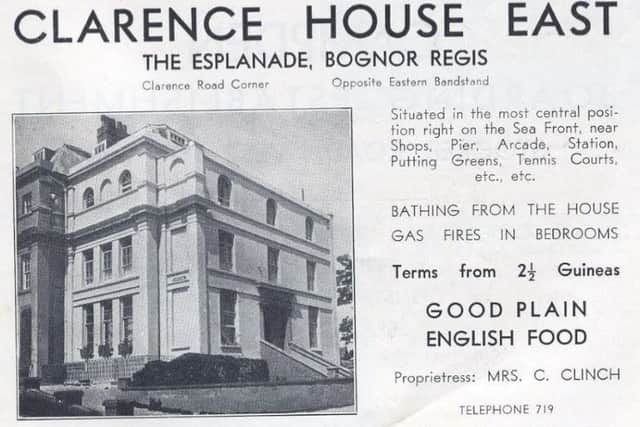

The crescent, that contained four stucco-fronted buildings, was named after Sir Edward Colebrook, Bart, of Barn Rocks, Aldwick. It was originally named New Crescent and over 300 men were employed to work on this major town construction.
The designer of the terrace was Samuel Beazeley Jnr, who also built the Theatre Royal in Dublin, and was responsible for the remodelling of the Drury Lane Theatre, the Royal Lyceum and the façade of the Adelphi in London.
By 1828, all the buildings in Colebrook Terrace were owned by Andrew Sorrell.
Advertisement
Hide AdAdvertisement
Hide AdThe terrace consisted of such memorable buildings as Highbury, Canonbury, Colebrook, Eversley, Clarence Hotel and The Pennington Hotel, and we shall now turn our attention to these individually.
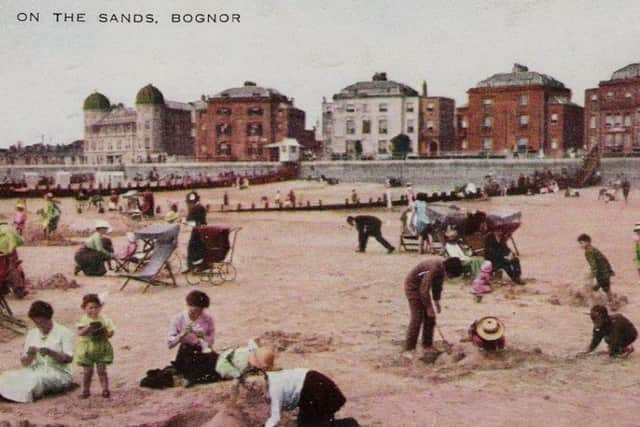

If we have a look at the 1881 Census, we find reference to some of these buildings. For example, Highbury House is recorded with Mr Tyler, coachman, his wife and their two children.
Charles Barlow is shown as the owner of Highbury with his wife and two children.
Julia Lawford is shown as the owner of Canonbury House. Colebrook House’s occupants were George Fishbourne, Baptist minister and his wife, their children and their domestic servant.
Advertisement
Hide AdAdvertisement
Hide AdThis terrace of buildings continued for many years as private residences and therefore very little reference is made to them during this period.
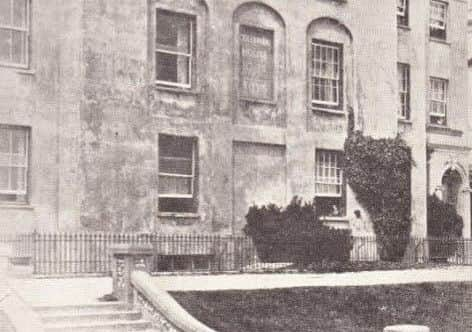

Starting at the west end we first come to Highbury House, No 1 Colebrook Terrace. In a 1923 town guide, it was advertised as a board residence, which was ‘working towards Christian Temperance Principles.’
The proprietress was a Miss Mable, and the terms at this time were two to three guineas per week. Late in 1930, Highbury House was advertised as then under the new management of Mrs Leslie Mable.
The advert went on to say that they now offered separate tables, mid-day dinner, liberal and varied menus, with electric light being provided throughout, but there was no increase in their rates.
Advertisement
Hide AdAdvertisement
Hide AdHighbury House also became well-known as the Highbury Tea Gardens with their sunken tea gardens, which could cater for up to 1,500 people. They had a covered area where ‘thousands’ of children and others could ‘come again’, according to the advertisement.
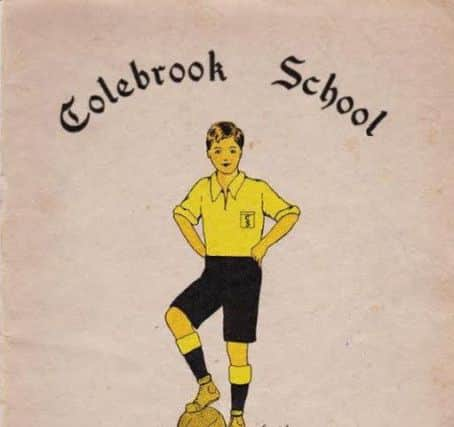

Another advertisement declared that they provided ‘cold luncheons with 500 seats under cover, plain teas in three large shelters also meat teas’.
Next we have Canonbury, also No 1 Colebrook Terrace, which was still a boarding establishment in 1933. Their telephone number was 1000, and you could send ‘grams: Canonbury House, Bognor’, a far cry from today’s emails.
Interestingly, they also advertised the advantage of electric light, with terms from two guineas to 8/6d per day, with children being received as ‘a pleasure’.
Advertisement
Hide AdAdvertisement
Hide AdThen came Colebrook School at No 2 Colebrook Terrace, which was established in 1886 as a boarding school for boys, by William Grice.
He was the chairman of Bognor Council at that time, having previously been a teacher at a school later named Northcliffe on the Upper Bognor Road.
He also was to lay the foundation stone of the Town Hall in 1932.
One particular advertisement prior to the first world war provides a different insight, by explaining that the accommodation allowed for 30 boarders, 30 day pupils and that the inclusive fees ranged from 30 to 40 guineas per annum.
Advertisement
Hide AdAdvertisement
Hide AdTheir aim was to provide a good sound commercial education with successful pupils achieving success at the College of Preceptors, Cambridge and civil service examinations.
The school eventually moved to the corner of Annadale Avenue, and then finally to Neville Road where it closed its doors in the early 1960s.
Next came Eversley School for Girls at No 3 whose advertising announced that they accepted girls who were the daughters of ‘trade’ families, which was quite unusual at that time.
In 1907 this school had as its principal Miss Keed and a ‘residential staff of English and Foreign Mistresses and visiting Professors’ who assisted.
Advertisement
Hide AdAdvertisement
Hide AdTheir aims were to provide high-class ‘modern education for girls,’ combined with ‘careful training and the comforts of home life’.
Similar to other schools in the town at this time, they also accepted foreign and colonial pupils, and specialised in preparing pupils for university and other examinations.
Their ‘entertainment’ included bathing, swimming, cycling, and sports and also drills!
The final pair of buildings shown as No 4 Colebrook Terrace consisted of the Clarence Hotel and the Pennington Hotel.
Advertisement
Hide AdAdvertisement
Hide AdMiss Elmslie ran the Royal Clarence Hotel from 1905 to 1928 exclusively for children accompanied by their nurse, or nannies.
By 1934 the hotel was advertised as the Hotel Clarence and commented that it was the ‘Bognor Regis leading family hotel’.
The hotel extolled the virtues of hot and cold water in rooms and that some rooms even had gas fires.
The Clarence Hotel had 40 bedrooms and separate tables were provided, if required. They had their own car park, and considered themselves to be ‘centrally placed’ so that visitors were able to partake in a variety of activities and amusements.
Advertisement
Hide AdAdvertisement
Hide AdIn a 1907 town guide, which provided information on trades and schools, the final property, Pennington House, had an interesting advertisement.
Mr H Newnham Travers would receive the ‘sons of gentlemen’ and his aim was then to ‘prepare them for the Public Schools and the Navy’.
This school was not alone in its preparation of young men for the Navy.
His advert continued with references to all the great schools such as, Eton, Harrow, Westminster and others where pupils had gained scholarships after attending his school.
Advertisement
Hide AdAdvertisement
Hide AdIn 1934, these premises were being used as a hotel and were under new management. They had 40 bedrooms and overlooked the sea and provided dances for residents.
Guidebooks for the town even in the 1930s extolled the virtues of our schools, stating ‘Bognor Regis is rich in schools, both for boys and girls.
Inevitable, as it is so healthy and so quickly reached from London, it has become a favourite place, especially for Preparatory Schools’.
Interested parties were invited to visit the schools, by appointment.
Advertisement
Hide AdAdvertisement
Hide AdThe complete crescent was finally demolished in 1947, and was to remain as a parking site until the Regis Centre was built. The low wall and steps down to the road remained for many years after the buildings had been demolished.
Don’t miss out on all the latest breaking news where you live.
Here are four ways you can be sure you’ll be amongst the first to know what’s going on.
1) Make our website your homepage at www.chichester.co.uk/
2) Like our Facebook page at www.facebook.com/ChichesterObserver
3) Follow us on Twitter @Chiobserver
Advertisement
Hide AdAdvertisement
Hide Ad4) Register with us by clicking on ‘sign in’ (top right corner). You can then receive our daily newsletter AND add your point of view to stories that you read here.
And do share with your family and friends - so they don’t miss out!
The Chichester Observer - always the first with your local news.
Be part of it.